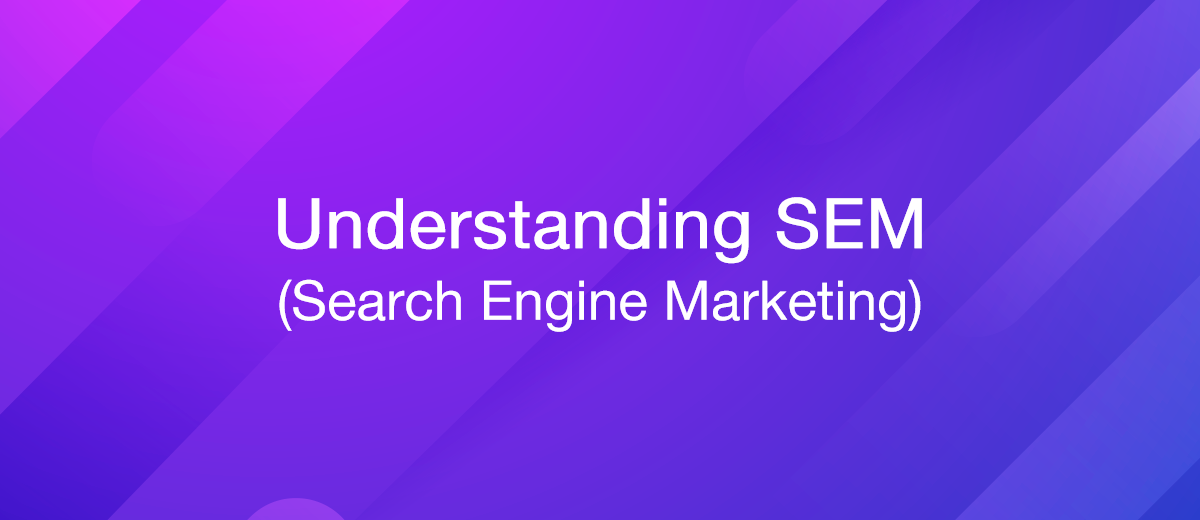Understanding SEM: From Basics to Advanced Techniques
In the rapidly evolving landscape of digital marketing, understanding and leveraging Search Engine Marketing (SEM) can set your business apart. From start-ups to established corporations, a robust SEM strategy has the potential to significantly boost your online visibility, driving more traffic to your website and ultimately, enhancing sales and customer retention. This guide takes you on a journey from the rudimentary aspects of SEM to advanced techniques that can give you an edge over your competitors. Whether you're a novice in digital marketing or a seasoned marketer looking to refresh your knowledge, this article will serve as your map in navigating the complex terrain of SEM.
Basics of SEM
In the realm of digital marketing, Search Engine Marketing (SEM) has emerged as a potent tool, commanding an integral role in the promotional strategies of companies globally. But what exactly does SEM signify?
Essentially, SEM involves the promotion of websites by enhancing their visibility in search engine result pages (SERPs). This is primarily accomplished through paid advertising. While Search Engine Optimization (SEO) revolves around earning traffic through free or organic search results, SEM buys traffic through paid search listings. It's worth noting that SEM encompasses SEO in a broader perspective; it involves both organic search activities (SEO) and paid search activities.

The importance of SEM in contemporary business operations is difficult to overstate. In an era of fierce competition and shortening attention spans, ensuring that your brand pops up on the first page of search results can drastically improve the chances of attracting potential customers. The truth is, the farther down the list your website appears in search results, the less likely it is to garner attention.
Keyword Strategy
The magic of SEM starts with the mastery of keywords - those vital phrases and words that define your content and allow search engines to index it appropriately. Identifying the right keywords and using them judiciously can significantly improve the efficiency of your SEM campaigns.
A comprehensive keyword strategy begins with thorough research. Tools such as Google's Keyword Planner or SEMrush can be instrumental in identifying popular keywords related to your business and the degree of competition for these terms.
Once you have identified potential keywords, it's time to make a selection. This involves considering:
- Relevance: Choose keywords most relevant to your business and offerings.
- Search Volume: Opt for keywords that are frequently searched for.
- Competition: Look at the competition level. High competition keywords can be more expensive and challenging to rank for.
Integrating these keywords into your campaigns requires skill. Overuse of keywords, known as "keyword stuffing", can lead to penalties from search engines. The secret lies in striking the right balance, ensuring that your content is not only keyword-rich but also engaging and informative.
Creating Compelling Ads
Crafting engaging SEM ads can be likened to creating a masterpiece. Each element needs to be just right. A compelling headline, concise and informative ad text, and a clear call to action are integral components of an effective SEM ad.
- Automate the work of an online store or landing
- Empower through integration
- Don't spend money on programmers and integrators
- Save time by automating routine tasks
It's worth noting that the headline is often the first thing users see, and it can make or break the ad's performance. A good practice is to include the primary keyword in the headline to ensure relevance.
The ad text, meanwhile, should highlight unique selling points, offers, or benefits that set your brand apart from competitors. Lastly, a clear and compelling call to action encourages users to click on the ad and take a desired action, be it making a purchase, signing up for a newsletter, or downloading a resource.
Landing Page Optimization
Landing pages are the cornerstone of effective SEM. These are the pages users land on after clicking your ad. An optimized landing page can significantly increase conversions and reduce your cost per acquisition.
Optimization revolves around a few key elements:
- Relevance: The landing page should match the promise made in the ad.
- Simplicity: The design should be clean, user-friendly, and focused on the call to action.
- Content: The content should be compelling, relevant, and include the target keywords.
- Loading Speed: The landing page should load quickly. Slow loading speed could lead to high bounce rates.
- Mobile-friendliness: With more and more users browsing and shopping on their mobile devices, your landing pages must be mobile-friendly.
Advanced SEM Techniques
The road to SEM mastery doesn't end with crafting compelling ads and optimizing landing pages. Advanced SEM techniques, like bid optimization, ad extensions, remarketing, and A/B testing, can help enhance your campaign's performance significantly.
Ad extensions allow you to include additional information, such as phone numbers, location, or additional links, making your ads more engaging. Remarketing allows you to target users who have already interacted with your website, potentially nudging them toward conversion.
Finally, A/B testing helps you understand what works and what doesn't. By creating two versions of an ad or a landing page and serving them to different portions of your audience, you can gauge the effectiveness of various elements and adjust accordingly.
In summary, SEM is a crucial tool in today's digital marketing landscape. By mastering the basics and gradually delving into more advanced techniques, businesses can harness the power of SEM to boost visibility, attract more customers, and ultimately, drive business growth.
Apix-Drive will help optimize business processes, save you from a lot of routine tasks and unnecessary costs for automation, attracting additional specialists. Try setting up a free test connection with ApiX-Drive and see for yourself. Now you have to think about where to invest the freed time and money!


